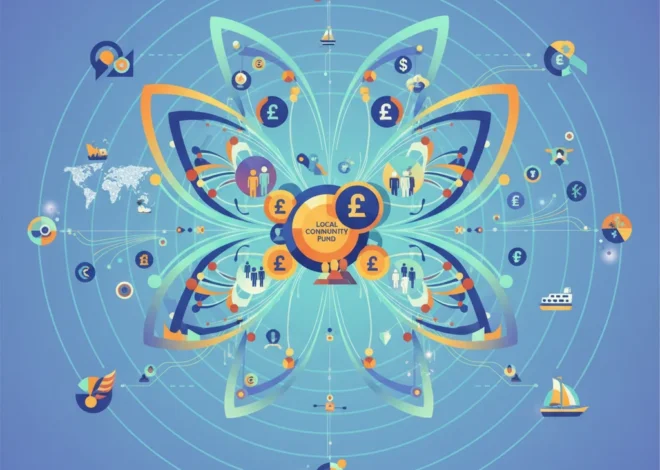
Asahi’s Bitter Brew: The Financial Fallout of a Cyber-Attack and What It Means for the Stock Market
In the world of investing and finance, risk is a constant companion. We meticulously analyze market trends, economic indicators, and corporate balance sheets. Yet, one of the most significant and rapidly growing threats often lurks not in the financial statements, but in the digital ether. The recent cyber-attack on Japanese beverage giant Asahi is a potent case study, offering a sobering look at how a digital breach can spill over into tangible operational, financial, and economic consequences.
While the headlines focused on a potential beer shortage, the real story for investors, business leaders, and financial professionals is far more complex. This incident is not merely an IT problem; it’s a critical event that impacts everything from supply chain stability and corporate earnings to stock market valuation and the broader economy. It serves as a stark reminder that in today’s interconnected world, cybersecurity is synonymous with financial security.
Deconstructing the Breach: More Than Just Stolen Data
In September 2023, Asahi, a name synonymous with one of the world’s most popular beers, fell victim to a sophisticated ransomware attack. The initial reports from the company, covered by outlets like the BBC, confirmed that the personal data of approximately 1.5 million customers and business partners had been compromised. This included sensitive information such as names, addresses, and phone numbers.
However, the attack was a dual-pronged assault. Beyond the data exfiltration, the ransomware crippled Asahi’s core operations in Japan. By encrypting critical systems, the attackers effectively shut down production and distribution networks, leading to the widely reported drinks shortage. This highlights a crucial evolution in cybercrime: attackers are no longer content with just stealing data for later use; they are actively disrupting the very engine of a business to maximize their leverage and financial gain.
For those in finance and trading, understanding this distinction is vital. A simple data leak has long-term costs associated with fines and reputational damage. An operational shutdown, however, inflicts immediate and catastrophic damage to revenue streams, creating a direct and measurable impact on quarterly earnings and, consequently, stock market performance.
The Cascade of Costs: From Brewery Floor to Investor Portfolio
The financial repercussions of a cyber-attack extend far beyond the potential ransom payment. They create a cascade of direct and indirect costs that can erode shareholder value for years to come. For a company the size of Asahi Group Holdings, these costs can be staggering.
Direct Financial Bleeding
- Remediation and Recovery: The immediate cost of hiring cybersecurity experts to investigate the breach, eradicate the malware, and restore systems from backups is immense.
- Regulatory Fines: While Japan’s data protection laws are the primary concern here, global companies like Asahi must navigate a complex web of international regulations. Breaches of this scale can attract significant financial penalties.
- Legal and Notification Costs: The expense of notifying 1.5 million individuals, setting up credit monitoring services, and defending against potential class-action lawsuits can run into the millions.
- Operational Losses: Every hour of downtime is an hour of lost production and sales. For a consumer goods giant, this translates directly to lost revenue and market share.
The average cost of a data breach has reached an all-time high. According to IBM’s 2023 “Cost of a Data Breach Report,” the global average cost is now $4.45 million, a 15% increase over the last three years. For critical infrastructure and manufacturing sectors, these costs are often even higher due to the complex interplay of physical and digital systems.
Beyond the Diamond: Decoding the Multi-Billion Dollar Economics of MLB's New Streaming Era
The Hidden Toll: Indirect Costs and Market Sentiment
While direct costs are easier to quantify, the indirect costs often inflict deeper, more lasting damage on a company’s financial health and its standing in the stock market.
- Reputational Damage: Consumer trust is a fragile and valuable asset. A breach of personal data erodes this trust, potentially leading customers to switch to competitors. Rebuilding a brand’s reputation is a long and expensive process.
- Stock Price Volatility: News of a major cyber-attack almost invariably sends a company’s stock price downward. While some recovery is typical, the breach can create a long-term “cyber-risk premium” on the stock, as investors price in the potential for future incidents and the perceived weakness in corporate governance. An analysis of Asahi Group Holdings’ (2502.T) stock performance following the news can provide a clear picture of this investor anxiety (source).
- Increased Cost of Capital: A company perceived as having weak cybersecurity may face higher interest rates from banks and lenders, as it is seen as a riskier investment. Credit rating agencies are increasingly incorporating cyber-risk into their assessments.
- Supply Chain Disruption: Asahi’s inability to produce and ship products doesn’t just affect its own bottom line. It impacts distributors, retailers, and partners, causing a ripple effect throughout the economy.
The Macro View: Cyber-Risk in the Global Economy
The attack on Asahi is not an isolated event but a symptom of a much larger trend impacting the global economy. Cybercrime is projected to cost the world $10.5 trillion annually by 2025, a figure that would make it the world’s third-largest economy after the U.S. and China. This represents a systemic risk to our financial systems, from banking and trading to fintech and beyond.
To put the financial impact of such events into perspective, consider how the Asahi breach compares to other infamous corporate cyber-attacks.
| Company | Year | Records Compromised | Estimated Financial Impact |
|---|---|---|---|
| Equifax | 2017 | 147 Million | Over $1.4 Billion (Fines & Settlements) |
| Marriott International | 2018 | 383 Million | $126 Million (Initial Fine, later reduced) + Remediation |
| Target | 2013 | 41 Million (Payment Cards) | $202 Million (Settlements & Costs) |
| Asahi Group Holdings | 2023 | 1.5 Million | Ongoing (Operational Loss + Remediation) |
This table illustrates that while the number of records in the Asahi breach is smaller than some others, the added dimension of a complete operational shutdown places it in a uniquely damaging category. This has profound implications for the world of financial technology and banking. The stolen data can be used to perpetrate sophisticated financial fraud, directly impacting banks and fintech platforms. In response, the financial technology sector is in an arms race to develop more robust security solutions, from AI-powered fraud detection to more secure digital identities. Some experts even point to the potential of blockchain technology, with its principles of decentralized and immutable ledgers, as a future pillar for securing sensitive transactions and data, though its widespread implementation remains a complex challenge.
The Summers-Epstein Nexus: A Sobering Lesson in Reputational Risk for Finance and Leadership
Fortifying the Future: An Imperative for Business and Finance
The key takeaway from the Asahi cyber-attack is the urgent need for a paradigm shift in how businesses approach digital risk. It is no longer a question of *if* an attack will happen, but *when*. This reality demands proactive, not reactive, strategies.
For business leaders, this means elevating cybersecurity to a C-suite and board-level priority. It requires significant and sustained investment in robust security infrastructure, regular employee training to prevent phishing and social engineering, and, crucially, a well-rehearsed incident response plan. A swift, transparent response can significantly mitigate the financial and reputational fallout of a breach.
For those in finance, investing, and economics, the lesson is equally clear. A company’s cybersecurity posture is a material factor that must be integrated into any serious financial analysis or trading strategy. The companies that demonstrate a commitment to digital resilience are not just protecting their data; they are protecting their earnings, their stock price, and their long-term position in the market. As we move further into a digitized economy, the ability to withstand and recover from a digital blow will become one of the ultimate tests of a company’s strength and a key driver of shareholder value.
Geopolitical Chess at COP30: How Brazil's Climate Diplomacy is Reshaping Global Finance
Ultimately, the story of Asahi’s ransomware attack is a cautionary tale written in code but paid for in cold, hard cash. It demonstrates that the firewalls protecting a company’s network are now as critical as the vaults protecting its money, and for investors, analyzing that digital defense is an essential part of modern due diligence.


